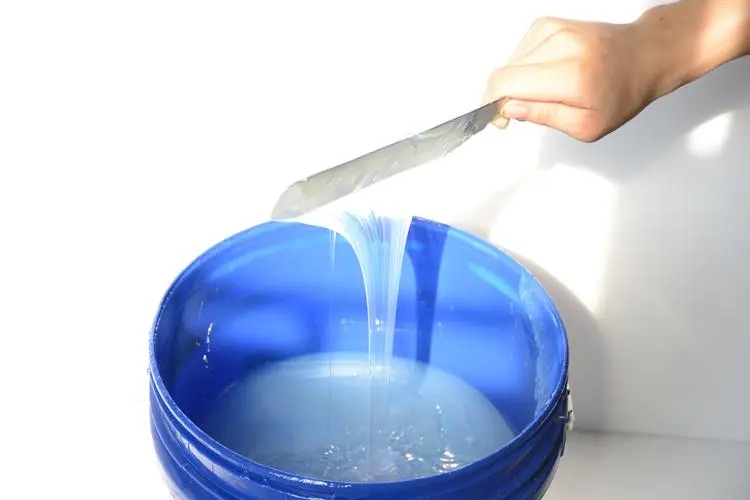With the promotion of silicone sealant production technology and the intensification of competition among enterprises, some manufacturers use white oil instead of dimethyl silicone oil as the plasticizer of silicone sealants in order to reduce costs. Using a large amount of white oil instead of silicone oil in silicone sealant will greatly reduce many properties of silicone sealant, such as weather resistance, high and low temperature resistance, and the performance of high-performance silicone sealant. This greatly reduces the performance and service life of the originally highly durable and high-performance silicone sealant. After this type of white oil sealant is used in engineering, it has poor aging resistance and large volume shrinkage. It is easy for the sealant to crack, become brittle and hard, etc., affecting the sealing and appearance of the curtain wall and even causing serious engineering accidents.
Dimethyl silicone oil is a colorless and odorless transparent liquid. Its molecular formula is mainly composed of dimethyl silicone chain segments. Its structure is very similar to the base polymer of silicone sealant, so it has good compatibility with the base rubber. Dimethicone is odorless, non-toxic, non-volatile and has good chemical stability. The viscosity changes little in a wide temperature range, and has a high boiling point and low freezing point. It exists as a liquid in a wide temperature range and can be used within -50~200C. Dimethyl silicone oil has good electrical properties, especially small rate factor in various frequency ranges. It has low surface tension and excellent shear resistance. Based on the above excellent properties, dimethicone is particularly suitable for use as a plasticizer and diluent in silicone sealants.

In the application of silicone sealants, considering the needs of construction, it is often necessary to adjust the viscosity of the sealant, reduce the viscosity of the adhesive, improve the construction fluidity and the lubricity of the adherend, so dimethyl silicone oil is used as an additive. Plasticizer. At the same time, adding plasticizer can also improve the comprehensive properties of the cured adhesive layer and improve the impact resistance and fatigue resistance of the bonded joints.
On the other hand, the addition of plasticizers will also affect other properties of silicone sealants. Generally, as the amount of plasticizer increases, the tensile strength of silica gel will gradually decrease and the elongation at break will gradually increase. The reason is that the addition of non-reactive dimethyl silicone plasticizer reduces the number of connection points between polymer molecular chains, which reduces the cross-linking density and ultimately reduces the tensile strength. In addition, the reduction in cross-linking density reduces the stiffness of the three-dimensional structure, and the molecules easily slip, resulting in an increase in the elongation at break. In addition, it was also found that as the amount of plasticizer increases, the bonding strength of silicone generally decreases. The reason is that the plasticizer used is a non-reactive plasticizer, which dilutes the active molecules of silica gel and reduces the number of active groups per unit volume.
In order to adapt to the larger-scale development of construction in the future and maintain the market growth of silicone sealants, companies should continue to improve product quality, enhance sustainable development capabilities, and jointly adhere to industry self-discipline and standardize the market. Dimethyl silicone oil has been widely used as a plasticizer in silicone sealants. Using white oil instead of silicone oil as a plasticizer will significantly reduce the performance of silicone sealants. In engineering use, white oil sealant should be rejected and silicone oil sealant should be selected.




